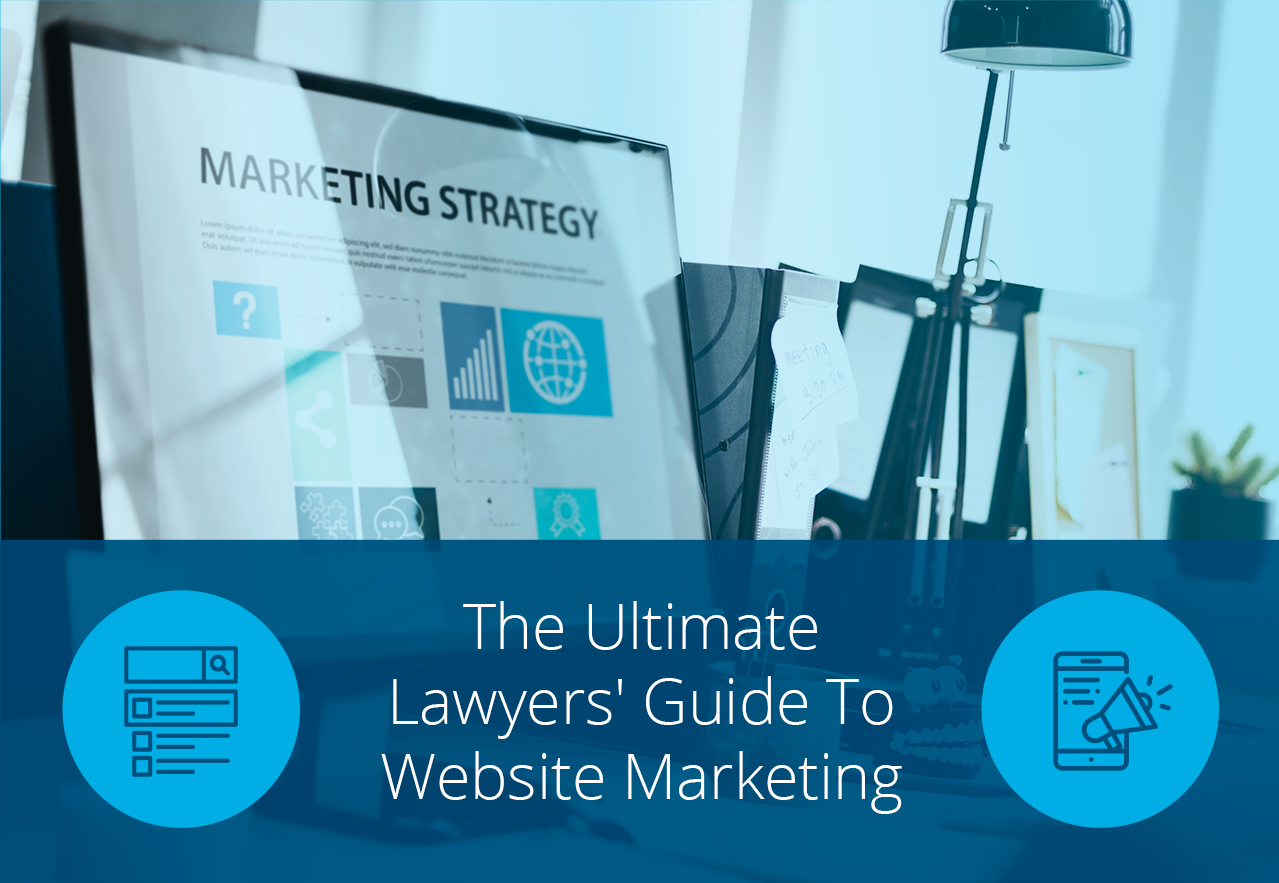Law Firm Marketing 103:
Lawyer’s Guide To Social Media
For attorneys, social media can provide significant advantages, both in marketing and in research. The ABA 2016 Legal Technology Survey Report (TechReport 2016) shows 74 percent of the respondents indicating that their firms maintain a social media presence and 76 percent maintaining individual social media accounts that they use for professional purposes. The report further shows that four primary practice areas are most likely to maintain individual social media profiles for professional use: employment & labor (83 percent), commercial (79 percent), contracts (79 percent), and litigation (78 percent). Among the lawyers who reported using individual social media accounts for business purposes, 73 percent of them say their reason for doing so is career development and networking. Client development is the next most common reason, followed by education and awareness of current developments, then investigation.
A more recent survey on social media usage among lawyers, conducted by Attorneyatwork.com, reported that 90 percent of respondents use social media, and 70 percent of its respondents include social media as part of their marketing plan, up from 60 percent two years ago.
That’s a huge number of attorneys using social media, but TechReport 2016 also includes some data on outcomes which should stand as a caution. Of that 76 percent of respondents who maintain an individual presence on social media for professional purposes, 51 percent report that they have never signed a client or a referral directly because of their social media presence; 25 percent stated that they have; and an amazing 24 percent reported that they don’t know whether they’ve ever signed a client or a referral because of their social media presence.
Count the cost carefully
If you’re a solo practitioner or you run a small firm, you’re probably already doing a lot of non- billable tasks. Your time is the firm’s most valuable resource, and you need to spend it according to a carefully planned “budget.” Making such a plan can feel like a catch-22: you need more clients and referrals to increase your billables, but bringing in that business takes time.Like everything about growing a small practice successfully, using social media effectively is a balancing act.
The fact that 24 percent of the attorneys in the TechReport 2016 survey didn’t even know whether or not the time they were investing in social media was paying off demonstrates how easy it can be to fall into a time-sucking habit. Don’t delve into social media simply because “it’s one of those things you just have to do.” If you want to use social media, start with defining why you want to do so in as much detail as possible. Do you want to expand your brand recognition? Network with colleagues? Stay up to date on trends, rulings, and educational opportunities? Do you want to use it more directly for business development? For many, the answer will be some combination of these reasons, but it’s important to prioritize and set achievable goals as specifically as possible.
Another somewhat surprising statistic from TechReport 2016 is that while 88 percent of the respondents regularly consume social media content, a meager 12 percent participated regularly (engaging in discussion or making posts, for example), and, less surprisingly, solo practitioners and attorneys in firms of 9 or fewer had the lowest rates of participation. In order to be effective on any social medium, you have to plan time to spend on it daily. Pre-scheduling posts can help you manage that time more effectively, but you still need to show that there is a human behind those posts by responding to comments, answering questions, and interacting with the people who consume your content; in marketing terms, you need to keep your audience engaged. It’s also important to note that the more a social medium is geared toward use by the general public (Facebook, for example), the greater the expectation for prompt replies.
On a business-oriented medium like LinkedIn, there is far less demand that people be available to respond immediately. That said, you should be available at least once a day to check in, reply to comments and questions on your own content, and engage with other people’s relevant content as well. The number of social media platforms on which you maintain accounts should be dictated by your specific goals and, just as importantly, by your ability to dedicate an adequate amount of time to each one to deliver an acceptable return on the investment of your time.
Whichever social media you decide to use, don’t just throw your time at it blindly; keep track of the time you spend and evaluate the results carefully. Among other things, that will mean asking new clients how they found you (maybe they saw you on social media, or maybe their brother-in-law follows you on LinkedIn and was impressed with your content) and checking your website analytics to see how much traffic each medium refers to your website and how many of those referrals are eventually converted to clients. Treat your time like cash, and with careful management and wise investment, you will see a valuable return.
Marketing gravity
Whether your top goal in using social media for your law firm is business development or brand marketing, you’ll achieve the best results by giving your followers content that has value to them: content that is understandable and relatable, reliable and accurate. Many lawyers write blog content or articles for trade journals and magazines, or for some types of practice, articles for consumer outlets. That content is the foundation of their social media marketing. If these articles are original, well-written, and search engine optimized, they can help to bring more traffic to those lawyers’ websites and build a reputation and public image of that writer as a trusted authority and a go-to source of accurate information in their field.
Others use curated content instead of original content. Curated content can be an effective addition to social media marketing, but, while it may allow to you offer greater breadth of information to your audience, it ultimately leads that audience to click through to an article on someone else’s site. Using all, or even a majority of, curated content is a weak approach to marketing and building credibility as an authority. Think of curated content as a virtual guest blogger and it will be easier to get a better handle on how much is the right amount to include in your content mix. While the ultimate goal is to build your own brand, you may find the benefits of sharing some curated content, like potential exposure to new people who follow the social media or website that created the content, valuable enough to make it a regular part of your social media marketing plan.
Tailor your messages to each medium
Once you’ve defined what you want to do with social media, you’ll need to consider which platforms can best help you to reach the right people. If your practice is real estate, family law, or personal injury, you may find it worth the extra time to maintain a presence on Facebook, because your likely clients are already there and it’s easy for them to share your content with other prospects. If your practice is in a field where your clients are businesses or businesspeople, you’ll probably get better results from LinkedIn, which is like Facebook for business. When it comes to networking with colleagues and keeping abreast of new trends and educational opportunities, JD Supra offers an excellent opportunity to address only your peers in a closed community, and the site offers massive distribution of members’ posts and articles to a specifically targeted audience.
As recently as five years ago, it was a reasonably effective marketing strategy to write an original blog post or article, write a little teaser for it, and blast that teaser and a link to the post across all your social media. In today’s field, that strategy no longer works. First of all, social media, especially Facebook, now throttles the number of users who see posts that are handled that way because they want businesses to pay for advertising. Google has also lowered the search engine result page (SERP) rankings of social media posts in general, and repetitive posts are most heavily penalized. Finally, users themselves have different expectations on various social media. Facebook, for example, is used in a very different manner than Twitter, LinkedIn, or JD Supra. While you may be making posts across all of your social media to take people to a single link, the posts should reflect the differences in users and the way they consume social media content. If you’re posting to JD Supra, you know you’re talking to other legal professionals, so it’s both appropriate and desirable to use language and abbreviations that make it more efficient for them to recognize the value of the content you’re offering. If you’re posting on Facebook, your post text needs to quickly grab the attention of “regular people” as they scroll along. Take a look at how highly-shared content on the medium you’re looking at is posted, and take your cues from their tone and post length.
Ethics and legal issues
Another area to take into consideration when you plan your social media campaign is potential ethical and legal issues. Some of the potential pitfalls are obvious, such as the increased risk for being contacted by a represented party or accidentally breaking confidentiality. Other possible issues are less obvious, but equally serious. For example, in many jurisdictions, social media profiles and posts are considered legal advertisement and are subject to the same restrictions as any other advertising method.
It’s easy to slide from answering questions on social media to inadvertently creating an attorney-client relationship. In a similar fashion, it can be entirely too easy to accidentally make prohibited solicitations through social media by using seemingly innocuous time-saving features like LinkedIn’s automated “Add Contacts” feature. Allowing a social medium to automatically import contacts from your address book may result in communications that meet the legal criteria for prohibited solicitation.
Take the time to research these issues thoroughly before you take to social media in order to protect your reputation and your practice.
Download The Ultimate Lawyers' Guide To Website Marketing


Download The Ultimate Lawyers' Guide To Website Marketing
Start Your Free 7-Day Trial
No downloads or software to install.
Complete this form for a quick demonstration with a product consultant to begin your free 7-day trial.
Can't see the form below? Click here or please disable your privacy blocker.

